This fairy tales unit of study is a free unit of study you can add to your reading workshop.
Children seem to love working through a fairy tales unit of study during reading workshop.
There are often familiar stories and patterns that they enjoy learning more about.
This unit will add an engaging learning opportunity to your reading workshop.
This is another unit of study from The Curriculum Corner.
About this fairy tales unit of study
This fairy tale unit of study will help you focus on story mapping, character traits and story elements. It is geared towards second and third grade classrooms.
Fairy tales offer a fun and engaging unit of study for your classroom. Students tend to love the familiarity along with the little surprises that can be added to this study.
Many students have heard a traditional version of a story like The Three Little Pigs or Little Red Riding Hood. This unit will give you an opportunity to review stories like those along with adding in versions that have fun and unexpected twists.
Below we are sharing a day by day lesson plan to help you create a unit that fits the needs of your students. You can use the unit as is or tweak it to better fit your class.
Just added! We have added a printable version of these lesson plans at the bottom of this post. This will benefit those teachers who like to have a hard copy to add to their reading binder.
You will also find a separate download that includes the printables described in the lessons. You will find anchor charts, graphic organizers, exit tickets and more.
Fairy Tales Reading Unit Outline
Day 1: Immersion
- As we begin any unit of study, we like to give students a day or two to simply explore and look through books.
- To prepare, collect an assortment of favorite fairy tales, new and old. We like to have enough that small groups of students can have a stack of three or four to explore.
- On this first day, the task students are given is to simply enjoy the books and explore.
Day 2: Noticings
- This second day is a continuation of immersion.
- Small groups of students will again be given a stack of books and some Post-It Notes.
- Their task is to record what they “notice” about the fairy tales. They are specifically looking for what makes fairy tales unique. They should explore why the books in their stack are considered fairy tales instead of simply a piece of fiction. (NOTE: students who are not familiar with noticings may need more guidance throughout this lesson.)
- After students have had time to explore and record their noticings, come together to create an anchor chart with the information they have gathered.
- We have provided three versions. The first has information about fairy tales already added with a purple and green background. The second is similar with fairy tale characters instead of the background. The final version is for teachers who want to create their own anchor chart using just the information your students have gathered.
- Print and add their observations during your discussion.
Day 3: Fairy Tale Search
- This fairy tale search is a great way to allow your students to practice what you have taught during your reading workshop mini-lessons!
- We envision using this two-sided search in small groups during the immersion process. Or, you can place at a literacy center with a basket of fairy tales.
- Students search the fairy tales to find the text features they have learned about. Once they find a matching title, they record the title and author.
- We will leave it up to you to decide if students can use the same book more than once!
Extension: Fairy Tale Elements Graphic Organizer
- You might have students complete this throughout your study.
- It contains room to take notes on four different books.
- However, you could provide students with multiple copies or a front to back version.
- Students will be searching for the following fairy tale elements: good character or hero along with a villain or trickster. They will record examples of magic, a castle or a forest. Finally, if they find groups of 3 or 7, they can note this.
Day 4: Sequencing
- After reading aloud a fairy tale of your choice, divide students into 4 or 5 groups.
- Give each group an event from the book to illustrate.
- After the students illustrate their scene, gather together.
- Have students put the events in order. Use a bold marker to add the words first, second, next, then and last to each drawing.
- Another option is for each group of students to have their own fairy tale. Each student will draw a scene and create a display for their book.
Day 5: Sequencing (Independent Activity)
- Read aloud a different fairy tale. (Students or whole classrooms working at a higher level can choose their own fairy tale to read independently.)
- Have students complete the “Fairy Tale Sequencing Notes” to organize their thinking.
- Students can then illustrate the five events or use words to describe them on the graphic organizer.
Day 5: Story Mapping
- You will find a story map and a retelling hand graphic organizer for students to complete.
- As always, it is best to model the completion of the organizer you choose with the class so students know your expectations.
- The story map or retelling hand can then be a task for students to complete during their independent reading time.
Day 6: Character Traits
- Students can have difficulty differentiating between character and physical traits.
- Help your students develop a deeper understanding with our Character Traits Anchor Chart. This anchor chart lists possible character traits characters can display.
- We suggest accompanying this chart with a discussion of physical traits characters might have. Read a book and have students practice identifying and supporting character traits the character displays.
- You will also find a graphic organizer you can use for this lesson. As a follow-up, students can complete a graphic organizer independently during independent reading.
Day 7: Character Traits Continued
Characters Inside and Out This is another opportunity for students to practice identifying character traits.
Day 8: Focus on the Villain
- To focus on the villain in fairy tales, we have created a WANTED poster for students to complete.
- Students will choose a fairy tale and complete the WANTED poster template.
- There are two templates available, one asks for students to share character traits – it does not list the number required so you may choose.
Day 9: Read All About It!
- Have students complete a book recommendation for their favorite fairy tale.
- Students should include why they are recommending the book and a picture to catch the attention of others.
Days 10 & 11: Book Talks
- Students talking about their reading does not happen without practice. Use the conversation starter cards to help guide book talks. Copy and laminate the strips.
- This is another activity where whole class modeling might be a good place to start. Model on the first day and then allow students to practice their own book talks in small groups the following day.
- You will also find a blank page for you to add your own questions.
Day 12: How Characters Respond
- This activity asks children to think about how characters respond to an important event in the story.
- This is another activity that should be modeled with students during small group instruction.
Day 13: Comparing and Contrasting Different Versions
- Read aloud two versions of the same fairy tale. (We chose two different versions of The Three Little Pigs.)
- Work together to complete our Compare and Contrast Venn Diagram.
- This is an activity that could first be done as a whole class and then repeated independently or in small groups for additional practice.
Exit Slips
There is a collection of exit slips provided at the end of the post that can be used for independent reading tasks.
Additional Graphic Organizers in this Fairy Tale Reading Unit:
Cause & Effect, Fairy Tale Highlights, Lesson Learned, I CAN Read Fairy Tales
Wrap up your unit with a fairy tale celebration!
As part of a fairy tale study in my own classroom, I included a focus on fluency with the use of fairy tale reader’s theater scripts I found on Amazon.
This was a very high interest activity.
The reader’s theater could be a small production where students practice and share with their classmates.
Another option is to turn this into a larger project where students create costumes, backdrops and invitations to include families or other classrooms.
Do you know that your students will love the readers’ theater portion of this unit? Expand this activity using the following ideas:
Expanding Readers’ Theater
Looking for help to expand your readers’ theater? Use the plans we have created below:
Fluency Practice Through Readers’ Theater
Our favorite part of this unit was when we had our kids work on fluency through skits and plays. You can choose to have kids write their own skits or purchase already written plays. We chose to use the already written plays because we wanted our kids focusing on fluency, not on writing during this time. We found many great options through Amazon, here are a few of our favorites
Introduction to Fluency Practice On this day we introduced the idea of working on the plays. We met as a class and talked about what a play is. We also created an anchor chart that listed things actors and actresses might do to become better actors and actresses. Our anchor chart included ideas such as practice, work to memorize the lines, use actions and use expression.
Assigning Plays Before we began on this day, we chose which plays we thought would work best for the students and assigned roles. You might also choose to allow students to audition. Again, we wanted the time to focus on fluency so we did not think this was a good use of our time in order to help us meet our goals. On this day we put students in their groups without telling them their roles. We wanted to make sure students comprehended what was happening in each play so we did not tell students which part they would be. We gave students the time to read through the play and begin to understand the format of plays.
Assigning Roles and Practicing The students couldn’t wait any longer to find out who they would be so on this day, we assigned roles. Once the kids knew who they would be, we had the kids highlight their lines and read through their parts on their own. During this time, teachers in the room helped students who were unfamiliar with new words. We reserved one day for independent practice and then we moved into practice with groups the next day. We created an organizer titled Act it Out to help guide this part.
Creating Props and Adding Action We began this day on a mini-lesson of what helps an actor or actress tell their story. We discussed props, scenery and adding action or movement. Children were given an opportunity to create their own backdrops and props on this day. We created an organizer titled Creating the Setting for students to complete as they visualize the play and create their setting.
Dress Rehearsal Students practice their entire play with props.
You can download the complete, free fairy tale unit of study here:
Anchor Charts, Graphic Organizers, etc. Download
We have also created a lesson plan outline that you can easily print. Download this part here:
Looking for other materials to add to your fairy tale unit of study? Try these freebies:
Our previous post included a link to our summary writing activities.
If you are looking for these, you will find them here: Summary Writing Scaffolding.
Here are a few books you might want to add to your collection (affiliate links included.)
As with all of our resources, The Curriculum Corner creates these for free classroom use. Our products may not be sold. You may print and copy for your personal classroom use. These are also great for home school families!
You may not modify and resell in any form. Please let us know if you have any questions.

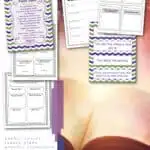
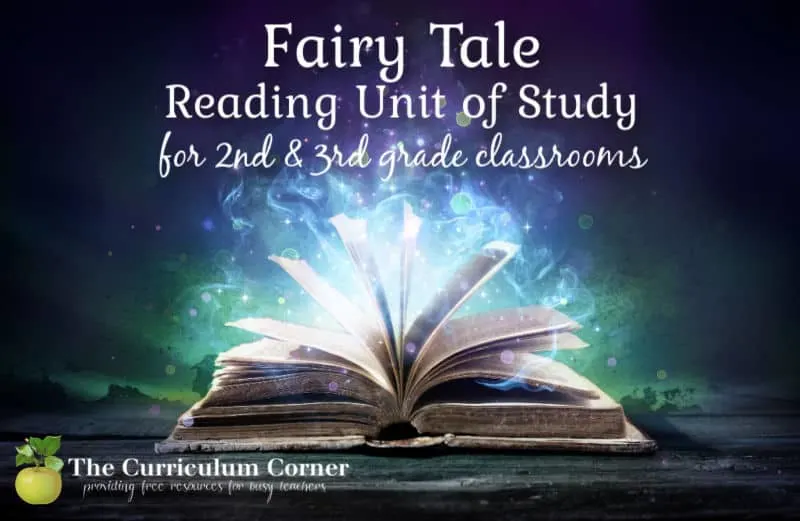
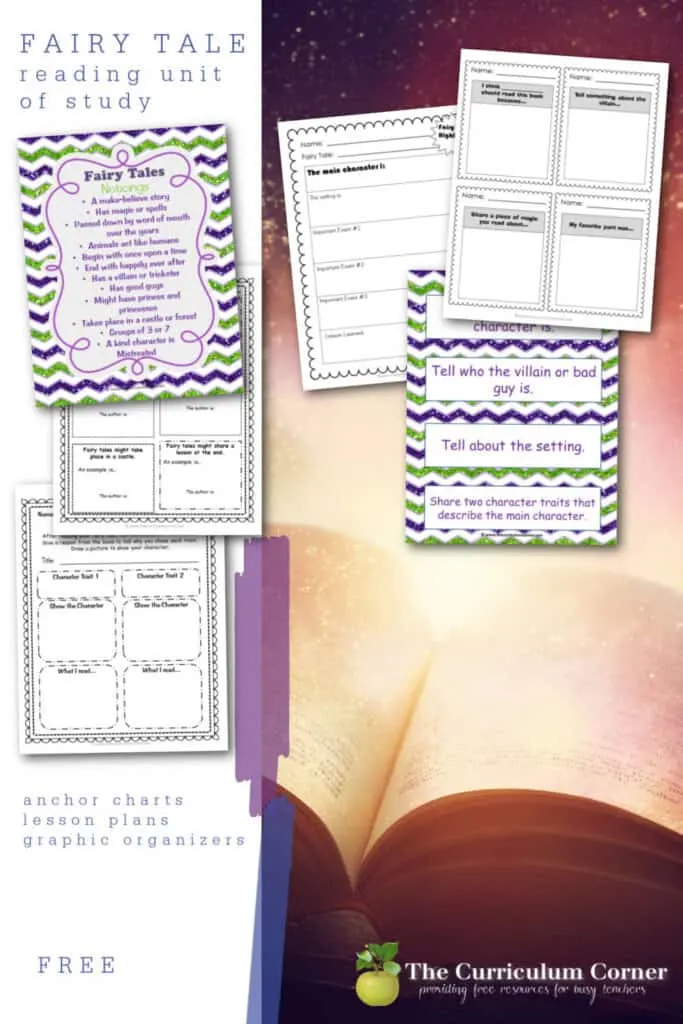
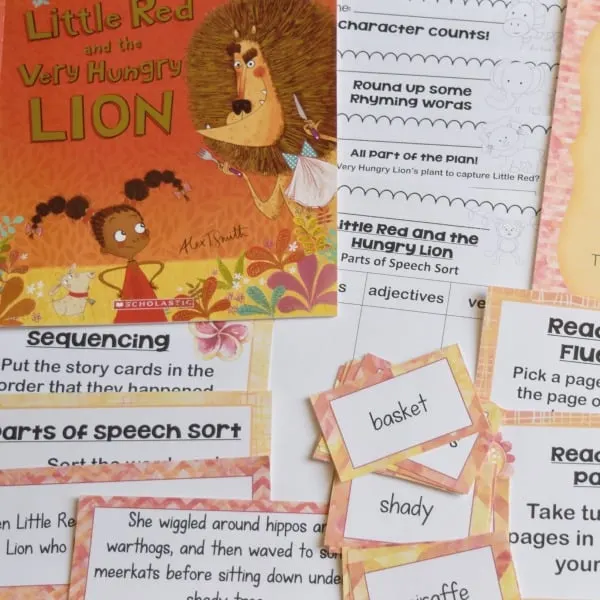
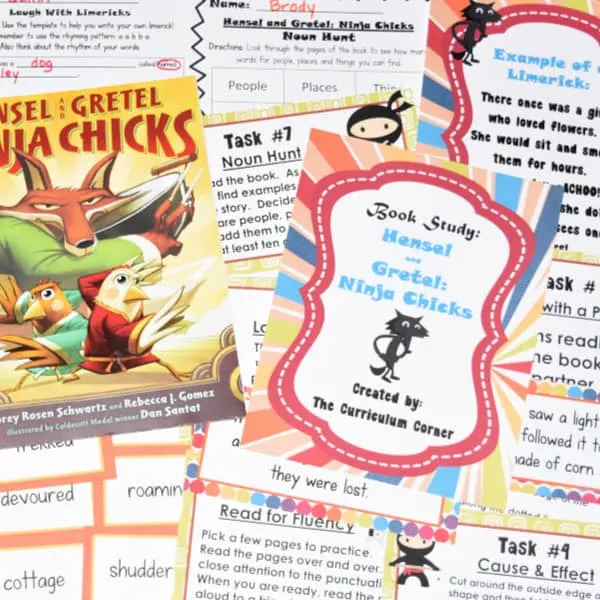

Kerry Spanner
Sunday 11th of July 2021
What a great resource you have created. Really practical. Thanks for sharing.
Lori Puckett
Saturday 6th of March 2021
Thank you, this is exactly what I have been looking for.
Susan Locken
Thursday 18th of February 2021
Thank you for helping me end my career on a HIGH note. Your materials are valuable and useful for every teacher.
Book Study: Hensel and Gretel Ninja Chicks - The Curriculum Corner 123
Tuesday 9th of February 2021
[…] Fairy Tale Reading Unit of Study […]
Why we should read more fairy tales. | A Happy Learner
Monday 17th of August 2020
[…] Fairy Tale Unit of Study Updated […]